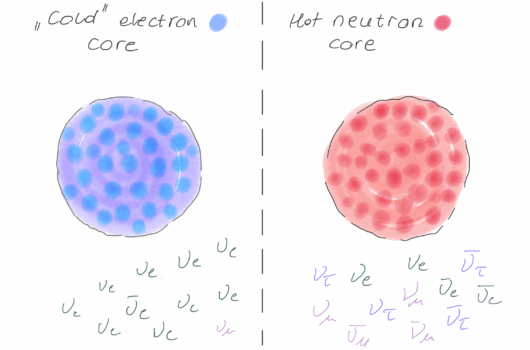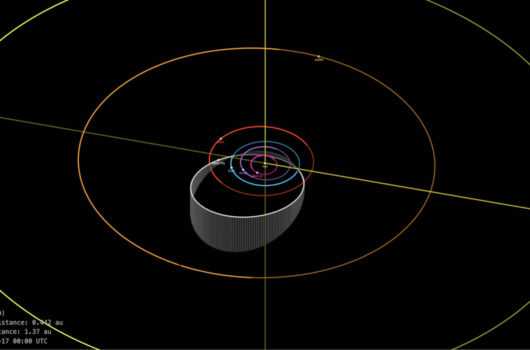Inelastic Freeze-in
Inelastic Freeze-in
View
Abstract
Dark matter (DM) could be a nonthermal relic that freezes in from extremely weak, sub-Hubble annihilation and decay of Standard Model (SM) particles. The case of Dirac DM freezing in via a dark photon mediator is a well-studied benchmark for DM direct detection experiments. Here, we extend prior work to take into account the possibility that DM is pseudo-Dirac with a small mass splitting. If the mass splitting is greater than twice the electron mass but less than the dark photon mass, there will be distinct cosmological signatures. The excited state ![]() is initially produced in equal abundance to the ground state
is initially produced in equal abundance to the ground state ![]() . Subsequently, the excited state population decays at relatively late cosmological times, primarily via the three-body process
. Subsequently, the excited state population decays at relatively late cosmological times, primarily via the three-body process ![]() . This process injects energetic electrons into the ambient environment, providing observable signatures involving Big Bang nucleosynthesis, cosmic microwave background spectral distortions and anisotropies, and the Lyman-
. This process injects energetic electrons into the ambient environment, providing observable signatures involving Big Bang nucleosynthesis, cosmic microwave background spectral distortions and anisotropies, and the Lyman-![]() forest. Furthermore, the ground state particles that are populated from the three-body decay receive a velocity kick, with implications for DM clustering on small scales. We find that cosmological probes and accelerator experiments are highly complementary, with future coverage of much of the parameter space of the model.
forest. Furthermore, the ground state particles that are populated from the three-body decay receive a velocity kick, with implications for DM clustering on small scales. We find that cosmological probes and accelerator experiments are highly complementary, with future coverage of much of the parameter space of the model.




